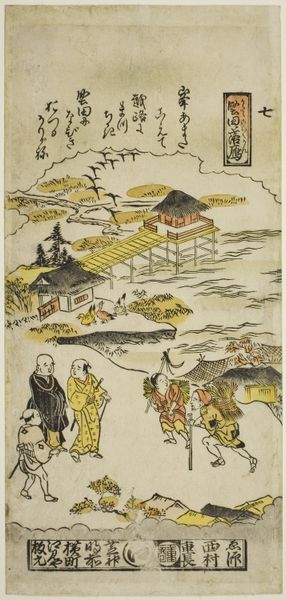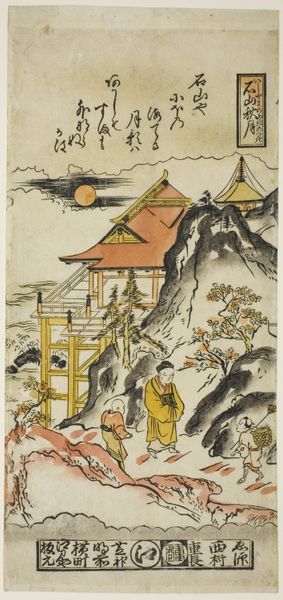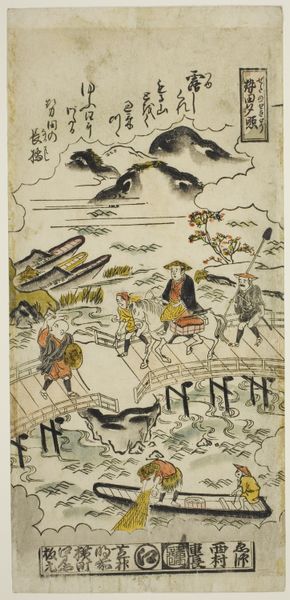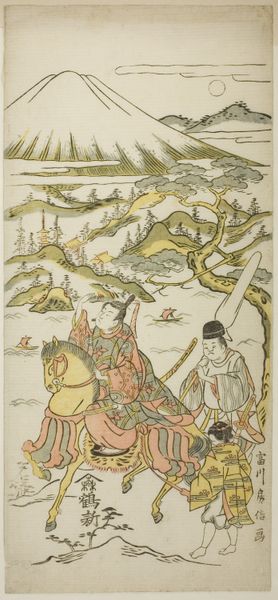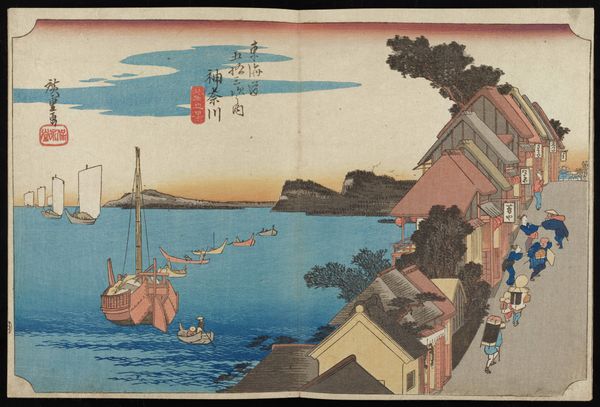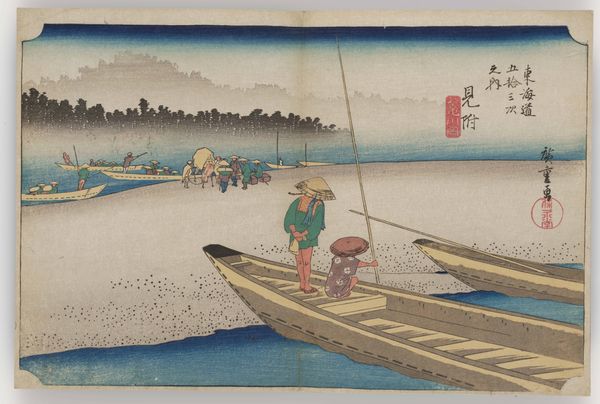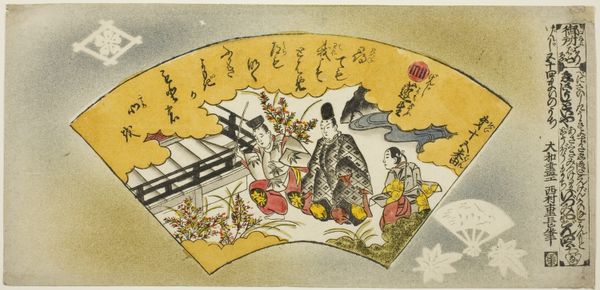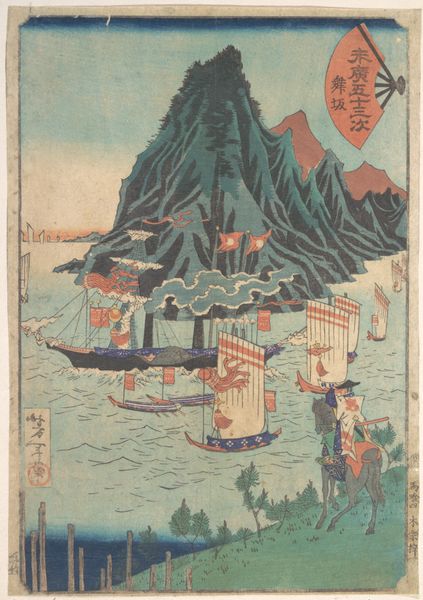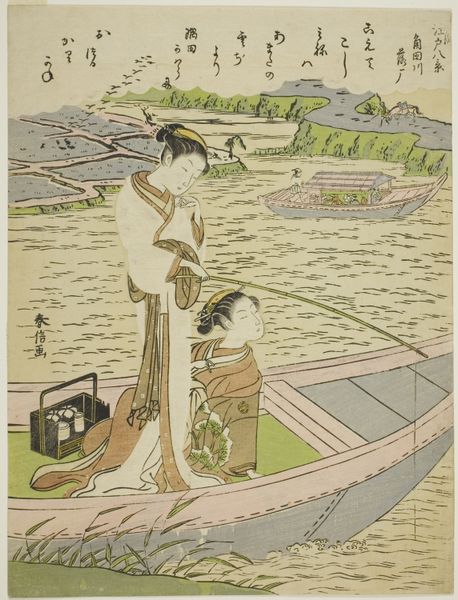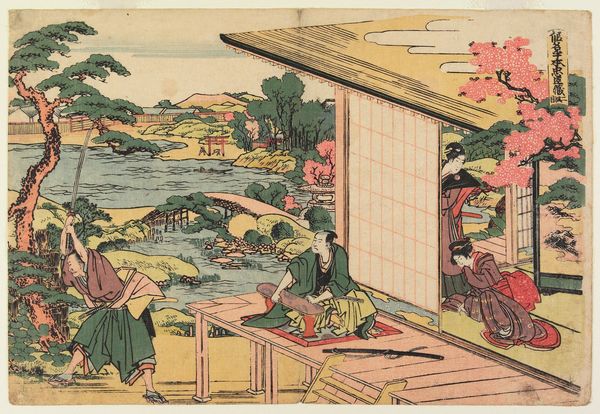
Returning Sails at Yabase (Yabase no kihan), No. 5 from the series "Eight Views of Omi (Omi hakkei)" c. 1730s
0:00
0:00
print, woodblock-print
# print
#
asian-art
#
landscape
#
ukiyo-e
#
woodblock-print
Dimensions: 12 9/16 × 6 1/8 in.
Copyright: Public Domain
Curator: The Art Institute holds a lovely print titled "Returning Sails at Yabase," part of Torii Kiyomasu II’s series “Eight Views of Omi,” dating from the 1730s. Editor: It's striking, isn’t it? The stylized water, the way the tiny sailboats recede into the distance, creating an immediate sense of depth and journey. It feels almost dreamlike. Curator: It's a beautiful example of ukiyo-e. What I find interesting is Kiyomasu II’s choice of woodblock print to convey such an ephemeral theme—the daily grind of transport and commerce set against nature's vastness. The medium lends a flattened, graphic quality. Editor: Exactly. It presents this interesting interplay. The piece hints at a social structure. There's the clear visual distinction in labor– the boatman, the burdened worker carrying goods, the child riding a fully loaded horse… The waterborne traffic signifies economic exchange, an existing hierarchy. Curator: Good point. The print makes me think of labor, really. It underscores the process. The artist designed the image, specialists carved the woodblocks, and then printers applied pigment to paper. So many steps to create this visual. Editor: That's where I see an underlying question around value— Whose work is validated? And what constitutes "art"? Is it the painter or those anonymous workers reproducing them that makes this ukiyo-e what it is? And furthermore what stories are told or erased depending on who wields the ink and paper? Curator: That reminds me that we’re viewing a reproduction now too! So many layers of remove in this consumption of imagery across eras. It makes you think of the journey the art took to even get into this room! Editor: And the journey the artist took, both literally and figuratively. Ultimately, what resonates is its quiet commentary on a society afloat on daily struggle and trade. Curator: It's fascinating how analyzing the materiality of the piece can open up questions about cultural impact and who and what is prioritized throughout history. Editor: Agreed. And contextualizing the art opens up narratives beyond just what the eye can see.
Comments
No comments
Be the first to comment and join the conversation on the ultimate creative platform.
